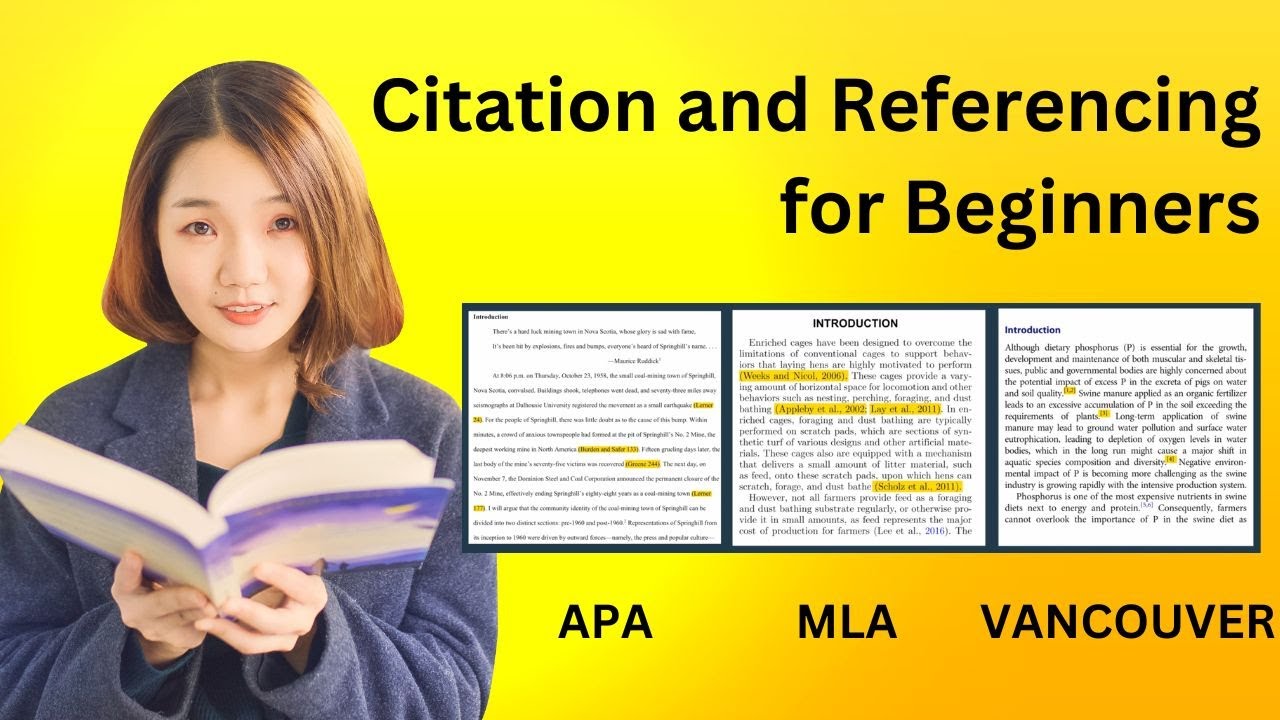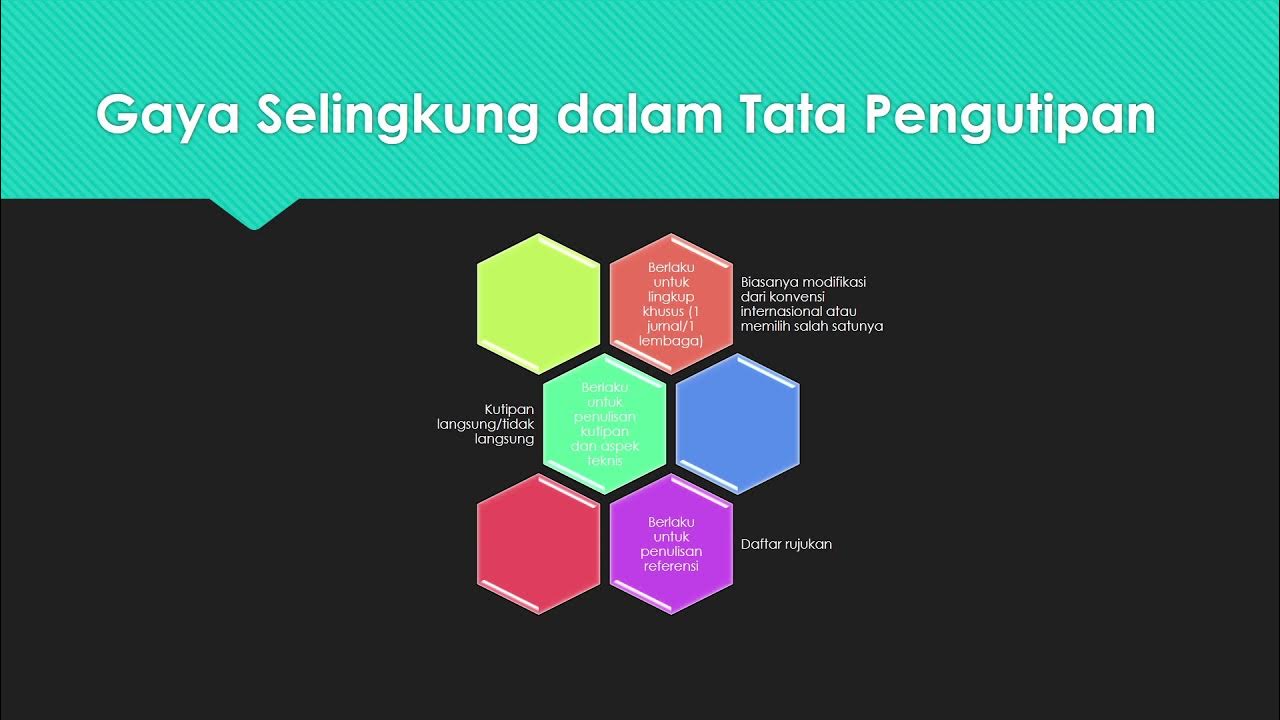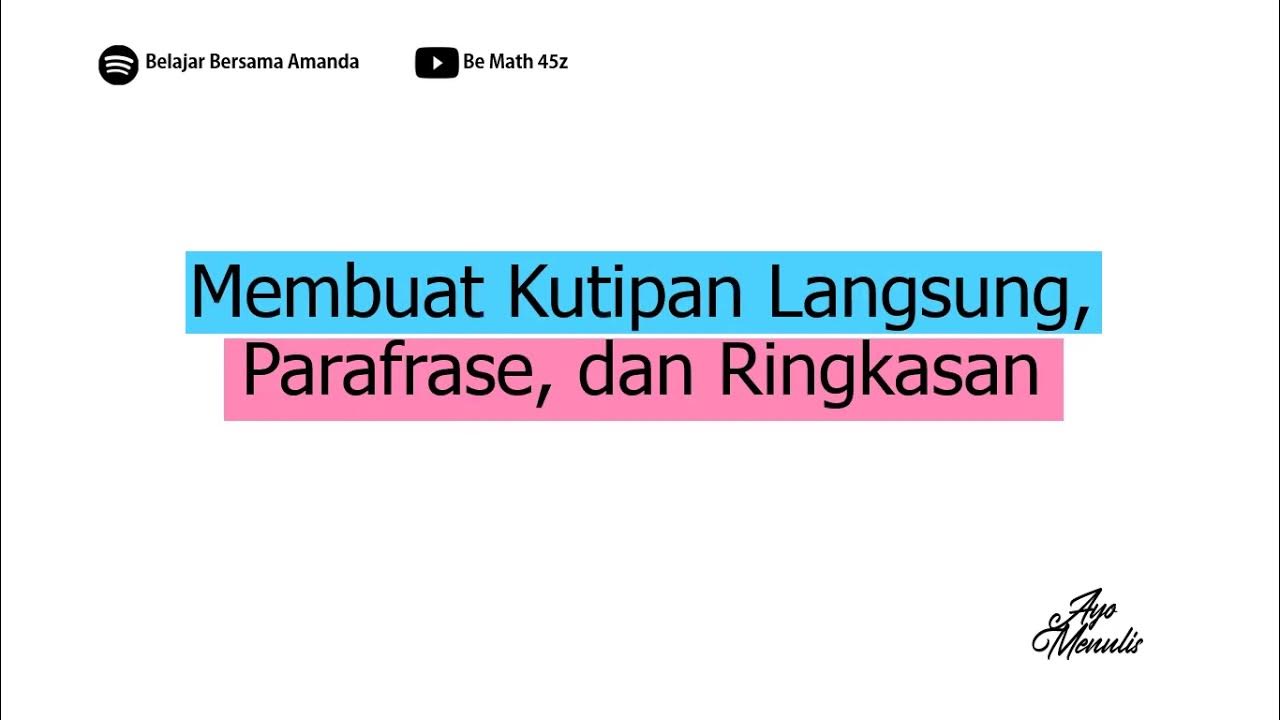Citation: A (Very) Brief Introduction
Summary
TLDRThis video explains the importance of citation in academic writing. It defines citation as the practice of acknowledging the sources you have used, whether quoted or paraphrased, to support your arguments. Citation allows readers to verify claims and recognize the contributions of others in your research. The video introduces common citation styles like MLA, APA, Chicago, and CSE, and highlights the two-part process: in-text citations and a detailed bibliography. It encourages students to use guides and online tools for proper citation and suggests consulting a librarian for help.
Takeaways
- 😀 Citation is the practice of identifying sources you've quoted, paraphrased, or otherwise used in your writing.
- 😀 The main purpose of citation is to allow readers to verify claims and follow up on your sources.
- 😀 Citation also serves to acknowledge the people whose ideas you've used to support your argument.
- 😀 By citing sources, you show that your research builds upon the work of others who came before you.
- 😀 Citation helps readers see the connections between different works and how they relate to your own ideas.
- 😀 Common citation styles include MLA, APA, Chicago, and CSE.
- 😀 Most citation styles involve two steps: in-text citations and a detailed works cited list or bibliography.
- 😀 The detailed citation at the end of your paper provides essential publication information, such as title, author, and publication date.
- 😀 Each citation style has a published guide that outlines the specific details of how to use it.
- 😀 There are many online tools available to help with citations and formatting.
- 😀 If you're unsure about citation or a specific style, ask a librarian for assistance.
Q & A
What is citation in academic writing?
-Citation is the practice of identifying the sources you have quoted, paraphrased, or otherwise used in your writing. It allows readers to verify claims and acknowledges the ideas and research of others.
Why do we need to cite our sources?
-We cite sources to allow readers to follow up on and verify claims made in the writing. It also helps to acknowledge the work of others that has contributed to the development of your argument.
How does citation help readers?
-Citation helps readers see the connections between different authors' works and how they relate to your own ideas, thus providing context and credibility to your argument.
What are the common citation styles?
-The most common citation styles are MLA, APA, Chicago, and CSE, each established by different academic and professional organizations.
What are the two main parts of a citation process?
-The two main parts are: 1) A brief notation in the body of your paper acknowledging the source, and 2) A detailed entry in a works cited list or bibliography at the end of the paper.
What information is typically included in a citation?
-A citation typically includes essential publication information such as the title of the work, the author, and the date of publication to help readers locate the source.
Where can I find guides for different citation styles?
-Each citation style has a published guide outlining how to use it. There are also many online tools that can help you format citations correctly.
What should you do if you have questions about citation?
-If you have any questions about citation practices or a particular citation style, it's recommended to ask a librarian for help.
How do citations benefit academic writing?
-Citations benefit academic writing by ensuring credibility, allowing for the verification of claims, and demonstrating the relationship between your work and that of others.
What role does citation play in academic scholarship?
-Citation plays a role in recognizing that your research builds upon the work of others, thus contributing to the collective academic scholarship and intellectual discourse.
Outlines

This section is available to paid users only. Please upgrade to access this part.
Upgrade NowMindmap

This section is available to paid users only. Please upgrade to access this part.
Upgrade NowKeywords

This section is available to paid users only. Please upgrade to access this part.
Upgrade NowHighlights

This section is available to paid users only. Please upgrade to access this part.
Upgrade NowTranscripts

This section is available to paid users only. Please upgrade to access this part.
Upgrade NowBrowse More Related Video

Citation and Referencing for Beginners Part II

Jangan banyak gaya dalam menulis karya ilmiah! Seperti memilih jodoh, cukup satu tanpa buru-buru...

When should you include in-text citations? | Learn how and where to use in-text citations

Academic Text v.s Non-Academic Text

Cara Mengutip untuk Menghindari Plagiat: Parafrase, Kutipan Langsung, dan Rangkuman

正しいコピペ(引用)の仕方・引用文献の書き方【レポート・卒論・論文の書き方 】
5.0 / 5 (0 votes)